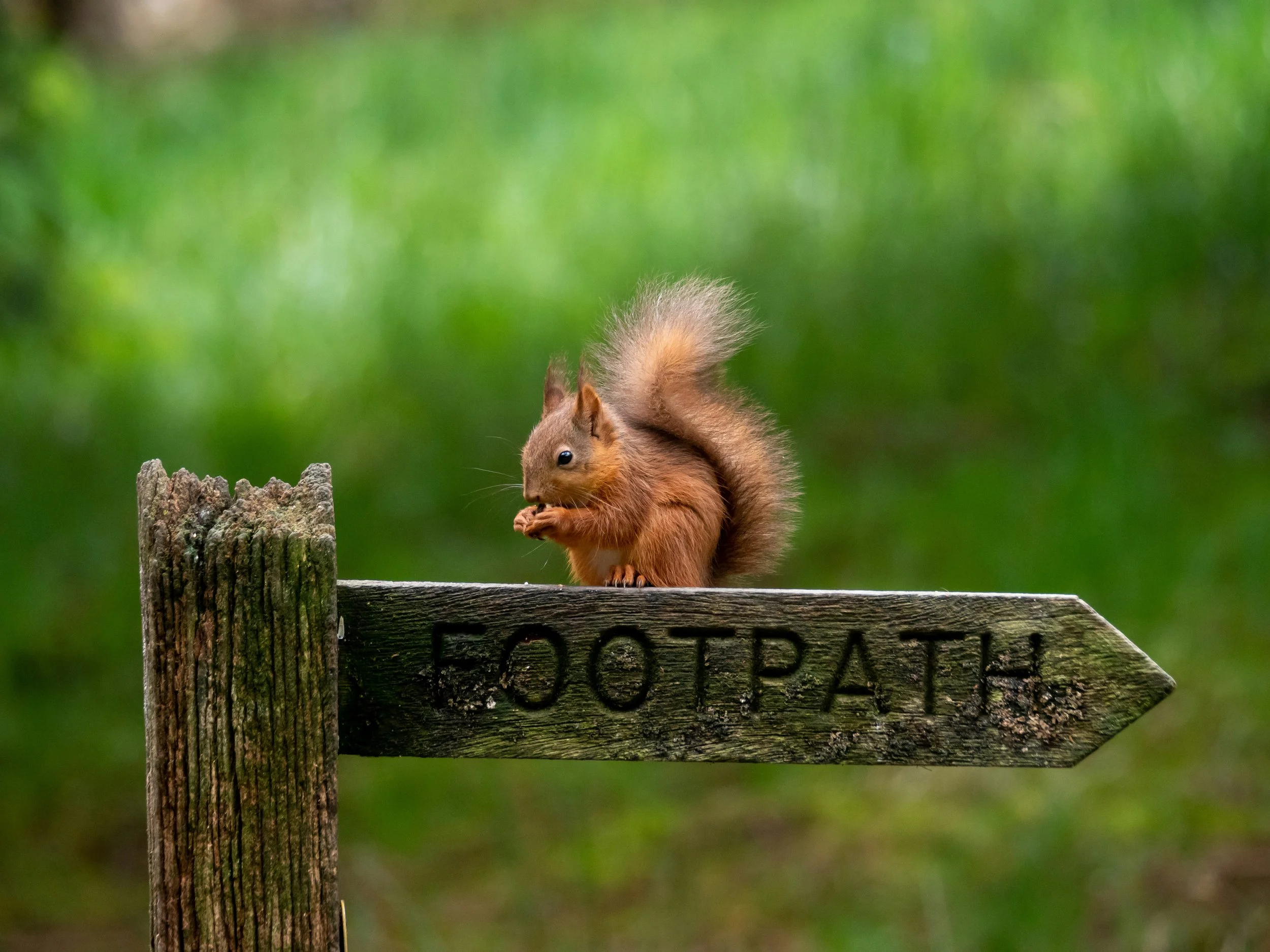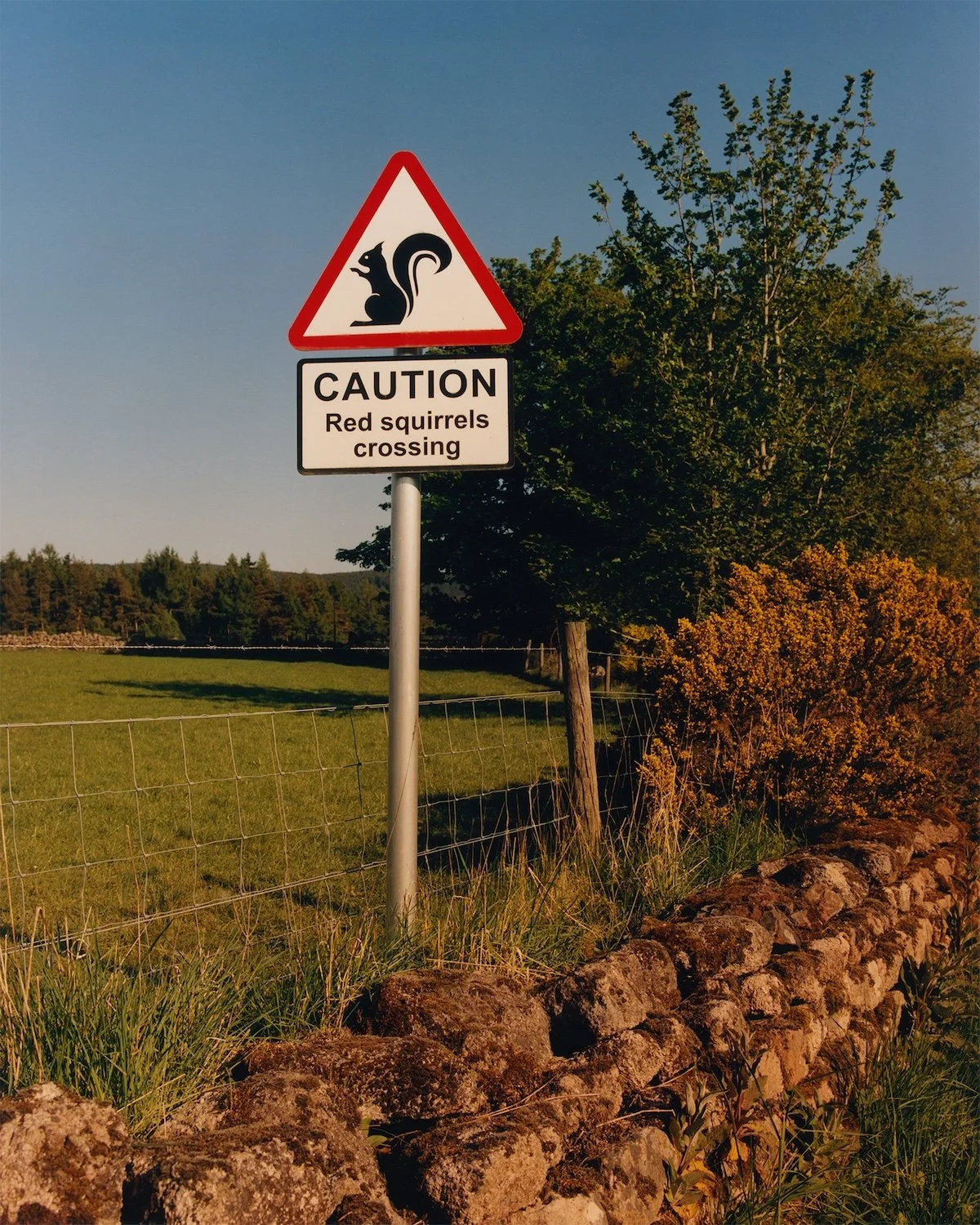The Red Squirrels are Coming!
WORDS BY CHARLIE GLADSTONEWhat’s your favourite British animal?
I don’t mean pets, they don’t count here.
I think that mine is either the red deer stag, golden eagle, Atlantic salmon or red squirrel. Or possibly a native owl of some sort. All of these live at Glen Dye, our home in the Highlands.
But if I had to choose one, it would probably be the red squirrel.
We see them most days at particular times of year, even though they’re shy, quiet, furtive little things. Infuriatingly, they have a tendency to run onto the road in front of cars and that doesn’t end well for them. Caroline has had some signs made that mimic official road signs and that warn drivers that our little red friends have kamikaze tendencies. I don’t know if the signs work but at least we tried.
And, by the way, I am fully aware that putting up your own road signs isn’t entirely legal, but I am not averse to breaking the law to protect an important, magical, endangered creature. If you work for our local council in the roads department, please forget I ever said this.
Or, if you can’t, will you take a bribe?
Red squirrels are endangered in Britain. There might be around 280,000, which sounds like a lot (though various interested organisations tend to disagree on what the actual number is). But it isn’t enough to guarantee survival, and their range is reducing quickly. More about that below.
There is more agreement on numbers of greys, of which there are around 2.7 million. They are the problem here.
The two types don’t fight, per se, but greys do carry disease that kills reds (though not greys), and they out-compete reds in the hunt for food, particularly acorns. Red breeding numbers also reduce when they are under stress from greys. The recent growth in pine marten numbers has also been a problem, and although some people say that they don’t compete with one another by virtue of operating at different heights off the ground, I am not persuaded of that.
What is it that is so magical about the red squirrel?
I think it’s a combination of things. They are very pretty, of course; the living embodiment of ‘cute’. I’m thinking Squirrel Nutkin here, my favourite Beatrix Potter character. If I’m lucky enough to spot one unawares, there’s a magic in their gentle, squirrely actions. And they are so silent and quiet, stealthy, occupying their territory confidently but modestly. Most sightings will be quick; if one crosses a path in front of me, I sometimes struggle to convince myself that I actually saw it.
Of course, their rarity makes them magical. A glance at maps charting their decline in the last century is shocking. In the 1920s there were decent numbers across the UK, except the very north of Scotland and central/south England. Today there are virtually none in England or Wales.
What else is interesting about red squirrels?
Well, firstly, contrary to popular opinion they don’t hibernate, although they do store food in ‘middens’ which are caches of deliciousness including nuts, berries, flowers and eggs. These ‘middens’ (which is also a Scottish word, still much used, meaning a refuse heap or dump) are in holes or the nooks of trees. And squirrels do rest in their nests during parts of the day and often for much longer in cold weather. These are reasons, I suppose, that people tend to think of them as hibernating.
Oh, and a couple more things.
They are most active at dusk, (making them crepuscular), and in so doing they avoid the attention of birds of prey, which are another major nuisance to them. They mate in late winter and mid-summer, and often have two litters of young (kits) each year. Although 3-4 years is their normal lifespan, they can live to 7 or possibly 8.
To find out more about these important animals or to contribute to their conservation, visit www.britishredsquirrel.org www.rsst.org.uk or www.squirrelaccord.uk I have donated to the first in that list, but I don’t know how their work differs from the others.




